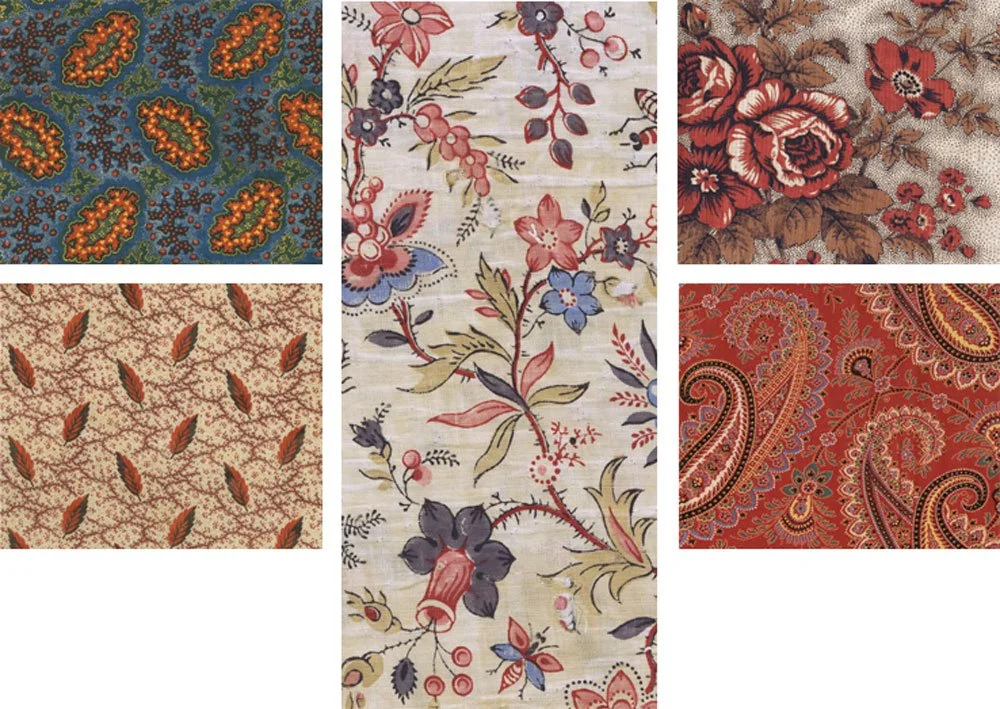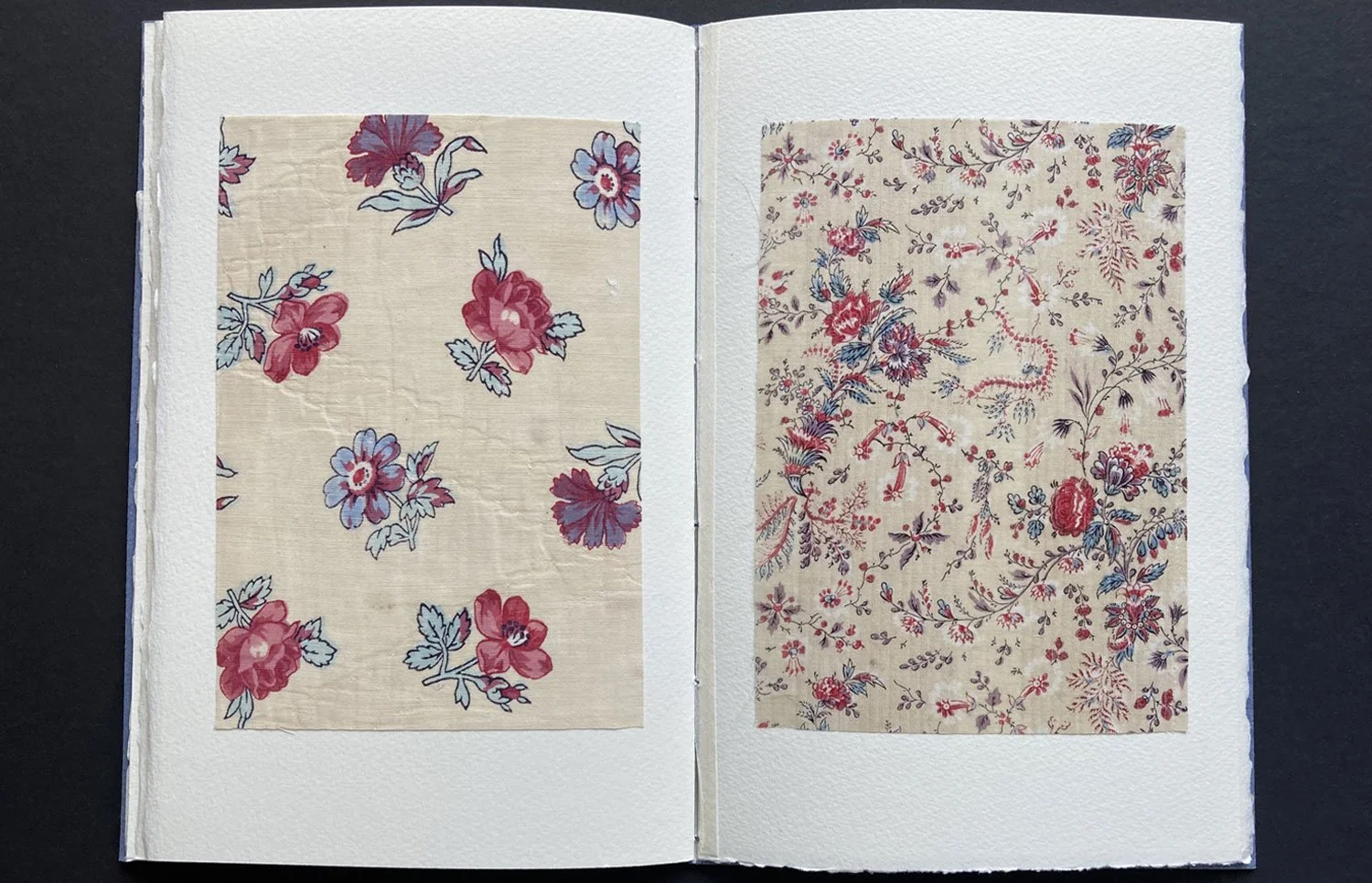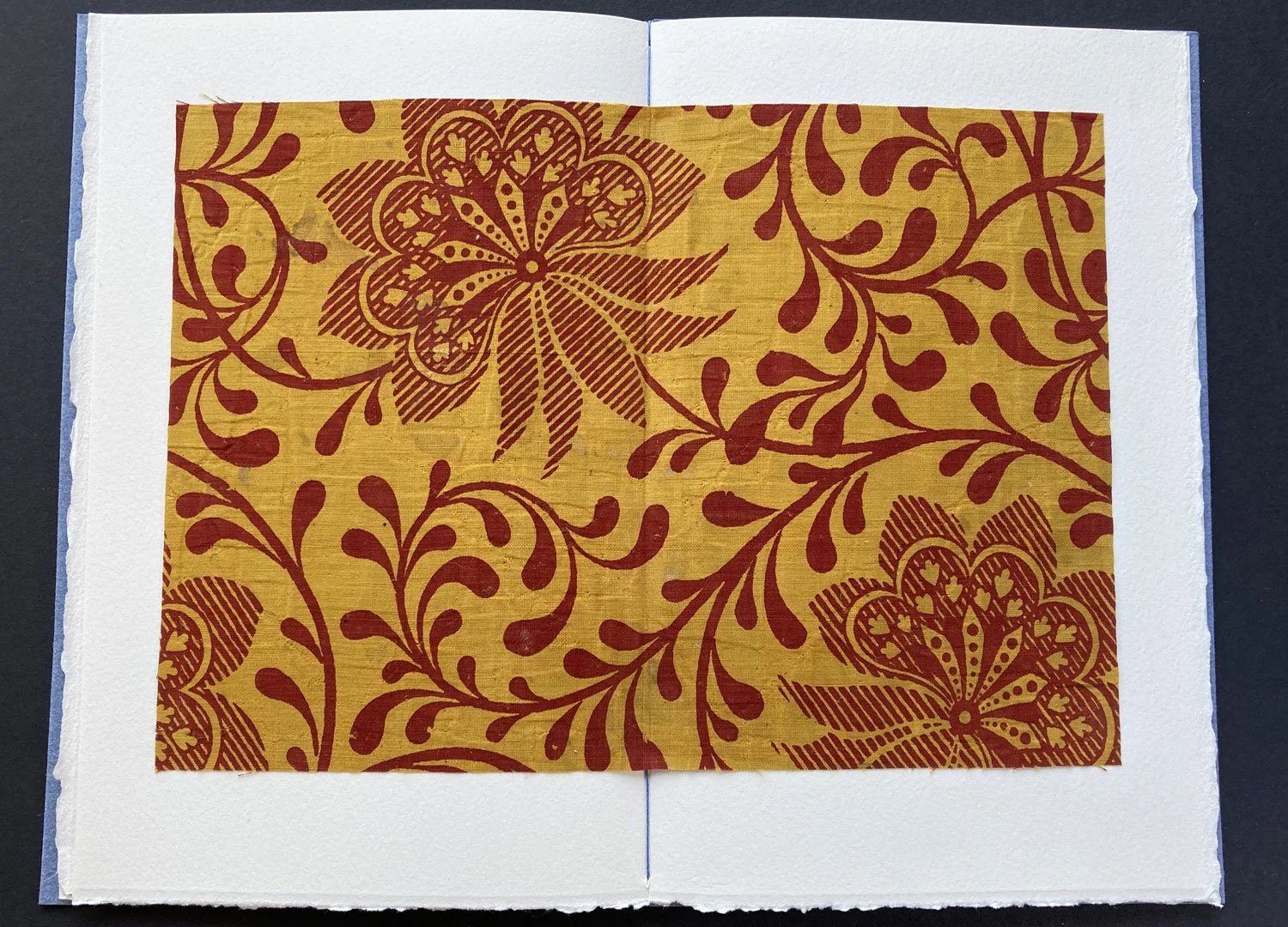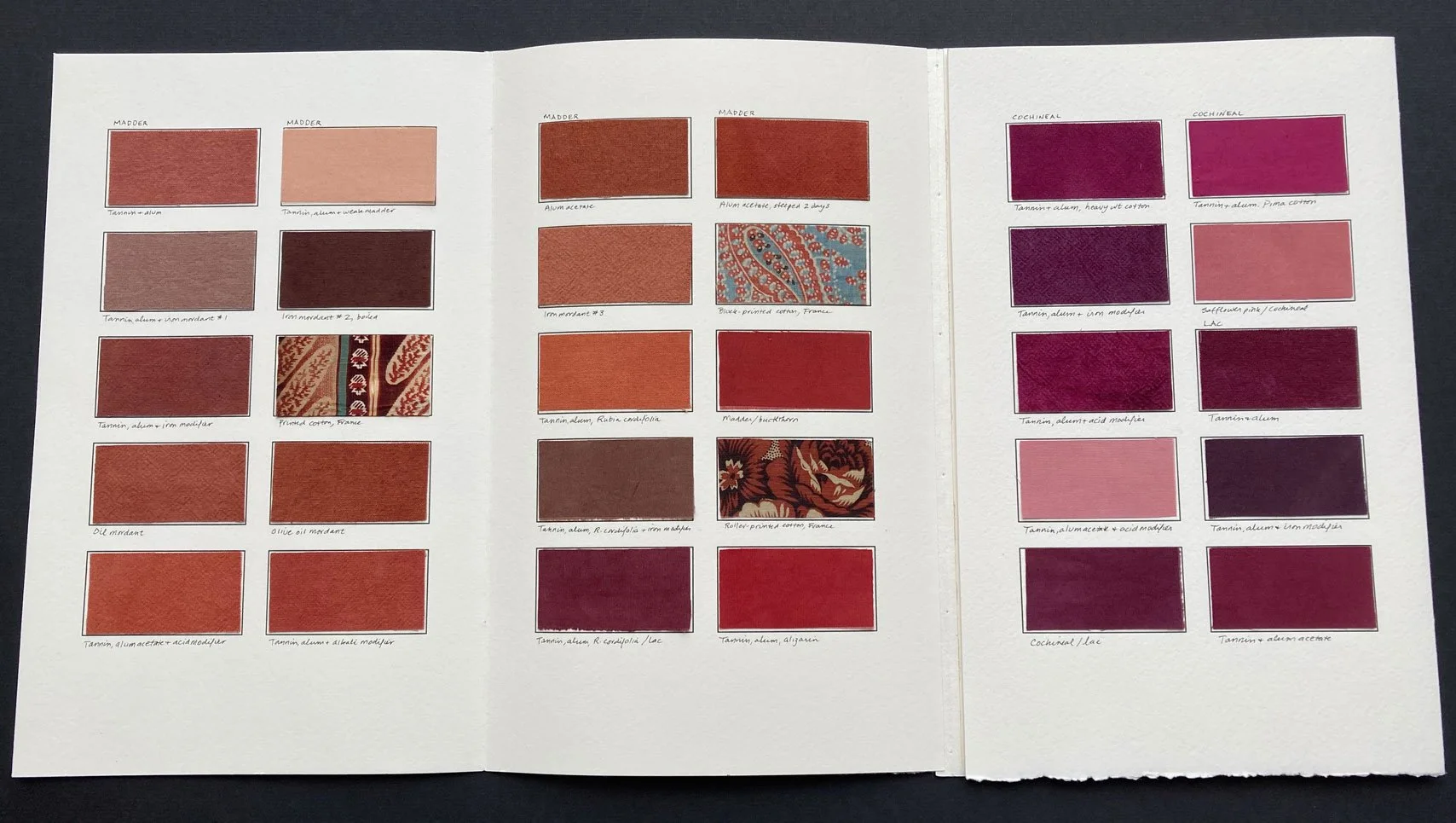Textile Designs on Paper
The Textiles
Each copy of Textile Designs on Paper includes a booklet of cotton fabrics with patterns and colors that put the gouache paintings in context. Swatches include paisley, floral, geometric and abstract designs, printed by the techniques of the age, such as block, copperplate, roller, resist and discharge.
“The textile designs in this book come from an exceptionally innovative time in the history of printed textiles. The 18th century was drawing to a close and the Industrial Revolution was giving rise to new printing techniques and exciting dye discoveries at an unprecedented rate, allowing a profusion of pattern possibilities to be reproduced on cloth as never before.”—Adapted from Textile Designs on Paper: “Printed French Textiles: A Brief History of Designs, Techniques & Uses,” by Susan Meller
Floral Cartouche, early 19th century. Block–printed cotton furnishing goods. The ochre, white and black motifs are surrounded by a madder blotch. Hatch lines and picotage add a textured look.
Tossed Garden Flowers, c. 1800. Block–printed cotton dress goods, pencilled blue, top of a provincial boutis quilt fragment.
Trailing Floral, late 18th century. Block-printed sheer cotton summer dress goods, pencilled blue. Influenced by French artist, Jean–Baptiste Pillement, these delicate fantasty flowers with petals composed of feathers are hallmarks of his work.
Ochre & Madder Scrollwork, c. 1820. Block–printed cotton, top of a whole cloth provincial boutis quilt fragment. Madder pattern printed directly on the ochre ground.
Also included is a separate eight–page dye sampler booklet, featuring 70 swatches of dyed cotton.
“Dyes used in the early 19th–century were extracted from the roots, leaves and petals of plants (including madder, safflower, pomegranate and indigo), and from the desiccated bodies of scaly insects (cochineal, kermes and lac). Madder, woad and weld, among others, were locally grown, while indigo, cochineal, lac, annatto and logwood, were imported from abroad.
“The swatches show the results of immersion dyeing four kinds of cotton with traditional dyes and mordants. Mordants include tannin with alum, iron, oil, or aluminum acetate, followed by calcium carbonate “dung.” Some samples were darkened with iron (ferrous acetate), deepened with an alkali (soda ash), or brightened with an acid (vinegar). Secondary immersions in other dyes created more complex hues; varying the dye strength and immersion time influenced colour intensity.”—Adapted from Textile Designs on Paper: “Gouache & Dyes: Colour & Technique,” by Barbara Hodgson








